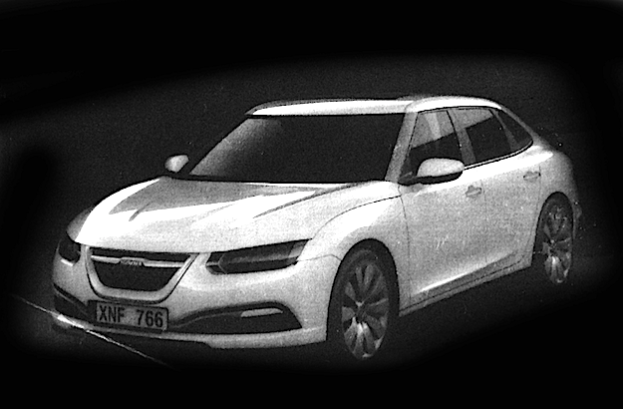
Thanks to Autocar, we’re getting a glimpse of a Saab that will probably never exist: the 900 five-door hatchback. These ghostly images represent what would have been the next step forward for Saab, had the Swedish automaker not gone the way of the buffalo in 2010.
This new 900 was reportedly based upon the Saab Phoenix platform with a body designed by one Jason Castriota here in the US. This gorgeous mid-size five-door seems to have the rear side profile of a Mercedes CLS and the nose of an Audi A6. Mostly, however, this 900 resembles the most recent 9-5 with a hint of vintage Saab thrown into the mix.

If we’re perfectly honest, though, the bodylines of the 900 just aren’t Saab enough for our tastes. With a name like 900, the vehicle is way too long and sedan-like. Clearly, Castriota tried to incorporate classic Saab lines. For our money, however, we would have loved to see something a bit more unusual with a stronger design statement – something a bit more Saab.
Sending power to the front wheels of the fated 900, buyers would have found a 200-horsepower, 1.6-liter turbocharged gasoline engine from BMW under the hood. Before its demise, Saab had penned a powertrain deal with BMW. Reportedly also in the powertrain pipeline was a hybrid with a rear axle-mounted electric motor designed in tandem by Saab and a company called American Axle.

This Phoenix platform that would have premiered on the new 900 last year could have been extended for a new 9-5 model. Autocar indicates that replacing the General Motors-based 9-5 was the next top priority for Saab before it went under and was snapped up by the Chinese who now aim to make Saab-based EVs.
We always loved Saab and these images simply remind us of what we lost: a re-birth of the old Saab. The next Saabs the world will see are the same old GM-derived Saab platforms but with EV bits underneath. While those might be exciting, they won’t be real Saabs.
Editors' Recommendations
- Nissan teams up with EVgo to provide free charging of Leaf vehicles in U.S.
- Honda joins GM, Mercedes, Toyota in self-driving group
- In latest prank, BMW ribs Mercedes-Benz with a Halloween joke
- 44 teams just completed a solar car race across Australia
- DieselGate continues to haunt Volkswagen as massive class-action suit is filed


